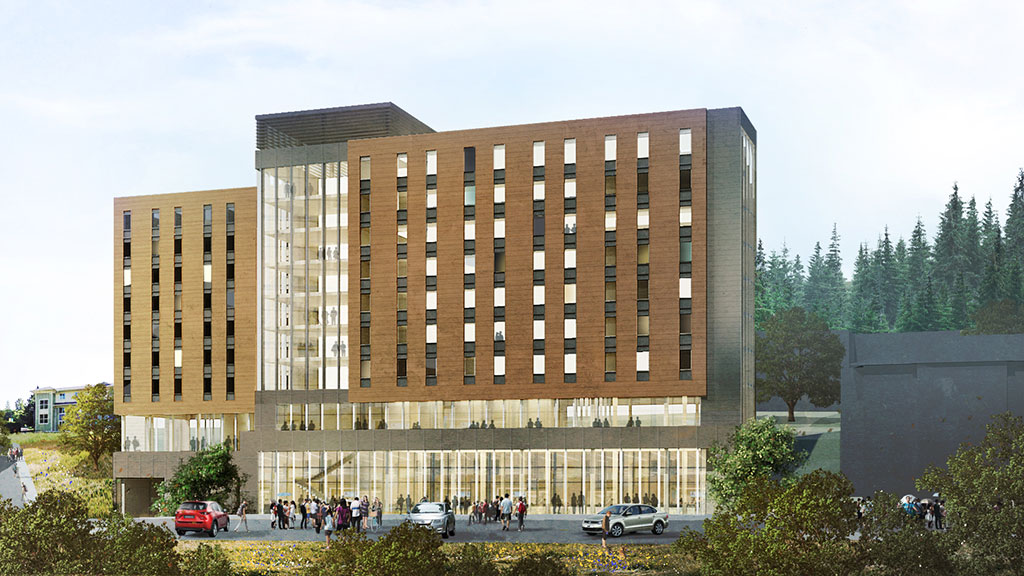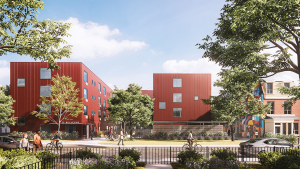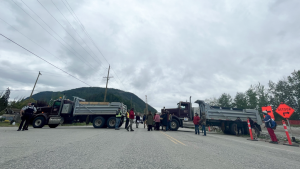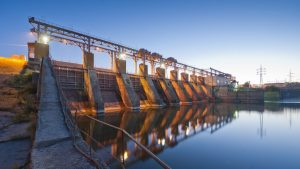A new mass-timber project is both a first for Vancouver Island University (VIU) and another step forward for B.C.’s Wood First policy.
VIU is building an $87.8-million nine-storey mass timber student housing project that will include 266 student beds, a common area and a new dining hall at its Nanaimo, B.C. campus.
VIU associate vice-president of facilities and ancillary services Richard Lewis said the project is a chance for the university to branch out while fulfilling its environmental responsibilities.
“From our perspective, it allowed us to do some things that maybe were a little unique, including extending the build height and provided us a lot of benefits around seismic properties as well as environmental benefits,” Lewis said.
“This would be our first mass timber endeavour and everything seemed to align well with our goals around sustainability, building performance and seismic performance so that’s how we sort of ended up where we did.”
Besides mass timber’s contribution to sustainability, the project will also make use of a mine water geo-exchange system that taps into the old Wakesiah mine residing under the campus. The mine was abandoned in the 1920s and has since flooded with groundwater but in 2018 the university built the first phase of the exchange system to tap into geothermal energy.
“That provides us a really unique opportunity to heat and cool buildings. We’ve been doing that since 2018 with some of our new construction projects and we’re going to be extending that to this project as well. It really allows us to get exceptional building performance and low greenhouse gas emissions for heating and cooling solutions,” Lewis said.
Challenges inherent to building on the VIU campus include dealing with a steeply sloped site since the campus is located on elevated ground and proximity to other operating facilities and students.
“There will be some challenges with proximity. There always are on campuses and in construction projects, but we’re really confident in the placement and the alignment of where we put the project on campus with our master plans. We are on the side of Mount Benson, and we always have considerations around a sloping site that make things a bit more challenging sometimes. Those just go along with the territory of building where we are,” he said, adding the new structure will act as a “front door” to the rest of the campus.
Vancouver architecture firm Perkins&Will created designs for the business case submission, Lewis said, but the procurement process is in early stages and no project architect has been chosen yet.
“Our plan is to have it open in September 2025, so we’re pushing forward with procurement right away and we’ll be looking at kicking off the detailed design process late this year or early next year,” Lewis said.
B.C. Minister of Jobs, Economic Recovery and Innovation Ravi Kahlon praised the project as both providing vital student housing and spearheading sustainability through use of mass timber.
“(It’s) not only being built for students and with affordability in mind, but also built with sustainability in mind. We know that the way we construct buildings is fundamentally about to change. In fact, in B.C., we’re leading the way and this project will not only be beautiful, it’ll be sustainable and it will provide much needed units for young people in our communities,” Khalon said.
Khalon said what excites him about mass timber use in post-secondary and other public institutions is that it’s a “triple word score.”
“It’s about innovation, connecting rural and urban communities in our economies and in the end, it’s about sustainability. We’ve been building the same way for 40, 50, 60 years and the industry has been slow to change. The opportunity here is to have a fundamental shift on how we build buildings and build them in a faster way,” he said.











Recent Comments
comments for this post are closed